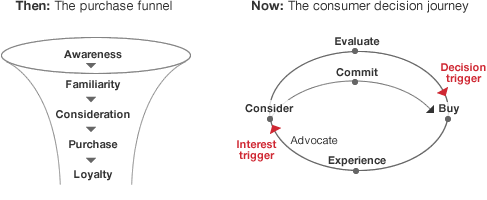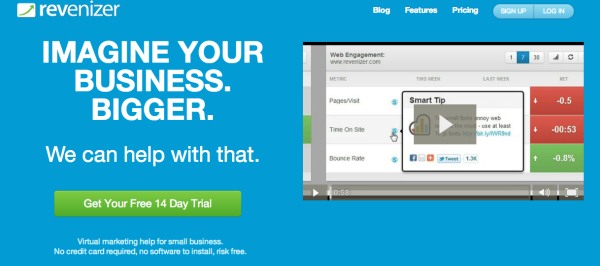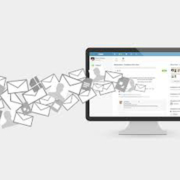How Digital Strategies Can Supercharge Your Referral System
It has been well over a decade since the digital revolution went mainstream. However, according to Google, 55% of small businesses don’t even have a website. The vast majority of those that do, have a website that lacks key features necessary to make digital a revenue generating channel. A common reason for this lack of focus is the belief that real business comes via traditional channels like referrals.

The problem is that referrals are heavily influenced by digital channels. Your client base needs to know exactly what makes you great and be energized to make a referral. Digital channels provide the necessary energy. A well thought out digital strategy is vital to guide the referral process.
How the new digital referral process works
Forget the Funnel – Think: Decision Journey
The decision process involves multiple contacts before the referred prospect is ready to contact your firm directly. The old funnel analogy was probably always flawed but it has become completely irrelevant as channels have fragmented.
Today, common contact points include:
- Website – Your site needs to quickly explain your value proposition (in seconds) and encourage a next step.
- Email– A common next step is sign up for an email newsletter allowing for relationship building. Email remains the most cost effective digital marketing channel.
- Social– Social provides a way to give referrals to get a sense of your firm’s focus and culture.
The real value of digital channels is that they give the referrer a way to connect via a series of influencing points that lead to channels where the prospect is most comfortable making contact.
Consulting firm McKinsey provides a great framework to think about the customer decision journey. McKinsey recommend that we focus on four areas.

1) Align
Marketing resources should align with where clients spend their time, which makes web, email and social channels more important. Traditional channels like partners are also important. The main thing is to make sure your resources have been appropriately realigned given the changed landscape.
2) Link
Multi-touch points mean that you need to present a consistent, easily-understood message that everyone in your business grasps. The message that the referring client communicates to the referred prospect needs to be reinforced on the website, social networks and printed materials. Inconsistent messaging and weak value propositions are major issue for many businesses.
3) Lock
Digital channels provide a great opportunity to “lock in” a customer’s attention. The most important of these are direct, opt-in channels like email subscriptions and social media. Opt-in prospects are more engaged and are more likely to convert since they have already made an important first step. Lead nurturing programs are key at this stage.
4) Loop
Perhaps the most important part of the customer journey is the creation an effective loyalty loop. Here, you look at all client touch points and find ways to engage using content. You want to increase the percentage of active loyalists that make referrals.
How Digital Channels Support the Customer Decision Journey
Align and Link
The Align and Link stages are all about strong branding and differentiated positioning. Research shows that search, web and social line up as the most effective and trusted channels for the initial contacts. Consistency is key. In-person channels like partners, clients and staff need to be trained in your messaging.
Areas of focus for “Align and Link”
- Messaging
Get the value proposition right. It should be obvious why your firm is different and why the referred client should care. Here’s a quick checklist. A value proposition should:
- Be clear and easy to understand (a reader should “get it” in 5-7 seconds)
- Communicate what a referral gets from your product or service that is different from competitors in a concrete way
- Not include hype (“the world’s best”), superlatives (“greatest”) or business jargon
Square is a good example. They offer credit card processing using your mobile phone. Square is selling against tradition credit processors with expensive, complex hardware. Their systems need to be installed by technicians and require long-term contracts. Their headline is “Accept Credit Cards Today”. Their sub-header is “Accept credit cards from an iPhone, iPad, or Android with Square. We’ll mail you a free card reader to get started”. Their next header is “Set up in minutes. No commitments.” With three short sentences and an image, Square explained why they are a much better choice than their competitors.
Give this worksheet a try if you need some help.
- Cover the key channels
Google predicts that by the end of 2015 mobile will be the main way that people interact with the Internet. Without a mobile friendly website or mobile optimized email formatting – referrals are killed. Basic channels like LinkedIn, Facebook, YouTube and Twitter need a presence to amplify messaging to loyalists and prospects.
Lock
Focus on email and social engagement here. An opt-in email list is the most important marketing asset for any business. Don’t get hung-up on numbers with this, as genuine opt-ins need to be nurtured – even if the list is small. This is similar to the gradual development of social followers or likes. The majority of social followers will not be real prospects, but the few that are make it worth your effort. The customer decision journey is likely to be long. Five to seven meaningful touch points are needed to win a new client.
Areas of focus for “Lock”
- Invest in content
Great content is vital. Prioritize quality over quantity and make sure that you promote it well. Only 2% of your followers on Facebook are likely to see your posts. Less that 10% are likely to open your emails. Repetition in fine. Think of ways to make your promotion visual.
Buffer offers some helpful suggestions for maximizing the value of blog content are mentioned in this post from.
- Give the referral plenty of options to make contact
The purpose of any web page is to get the visitor to take a new step. In the marketing world this is described as a call-to-action (CTA). A “Learn More” button or short form letting a visitor sign up for an email are good examples. You want a CTA above the fold or in the area that you see without having to scroll. You also want one at the bottom of a page for people that scroll. The goal is to get the referral to opt-in so you can engage directly.
KISSmetrics provides an overview of effective call-to-action strategies.
Loyalty Loop
This is probably the most overlooked component of the process. The referral is now a client. You want your clients energized to drive new referrals. The great thing about digital is that you have data as a result of all the online interactions. For example, regular email opens and click-throughs by a contact demonstrates interest. Your social channels, blog and video attract prospects but also provide the energy to drive the referral system. Metrics like shares and views are relevant with these channels. Customer support and service provide opportunities in areas not normally considered as marketing. Social has made service very public. This can be a big marketing opportunity
Areas of focus for “Loop”
- Customer touch point review
Review all the ways that you interact with your customers and check for consistency with your core message. Look for ways that you can apply your content program to your customer base. Do the same for your partners. Make sure that you are giving your customers and partners the video or blog content that they feel compelled to share. It should be easy for them to opt-in to all your channels from email through to social. Take every opportunity to encourage them to be part of your “tribe”.
The Optimized Digital Referral System
Let’s take a look at Revenizer (an affiliated firm) to see some of these principles in action. Revenizer offers a Virtual Marketing service designed to help businesses grow using digital channels.
Above the fold:
Value proposition: The value proposition pretty concise. “Imagine Your Business Bigger” appeals to the ambitious customer type in line with “Best Customer” profile. The “Virtual Marketing Help for Small Business” tells the reader exactly what the service does and who the service is for. The free trial offer and $19 per month entry point plan demonstrates a difference from traditional consultants.
Video: The short video demonstrates how the technology works. Short videos can be a very effective way to explain your business in more detail.
Call-to-action: The “Get Your Free 14 Day Trial” is very specific. You know exactly what is next if you click the button. The green encourages action as it clearly stands out.
Offer: The trial is an opt-in that “locks in” the user for a nurturing program via email. It also allows the user to experience the service first hand. A great strategy for any service business.
Below the fold:
For those that scroll down the page, there is another chance to act. At this point, the visitor knows that we not only offer the application but we have dedicated “live person” Virtual Marketers also.
Call-to-action: The options laid out for the user. To enhance this further, it might make sense to change the colors to emphasize the trial or offer a more focused choice than all three options.
Social opt-in: The user has the opportunity to connect via their preferred channel. These icons could be emphasized even further given the growing opportunity in social media.
Conclusion
High trust channels are the most effective at converting interested prospects into customers. Referrals receive a lot of focus for good reason since trust is already established, but referrals just don’t happen in today’s digital environment. You need to energize your client base and partners with a clear, differentiated message that is consistently reinforced. This initiates the referral system. The referral decision journey then needs to be managed so your “best at” message is consistently delivered in engaging ways across the various touch points. The use of digital tools and channels by business is still immature. There is a big opportunity for businesses that get the digital referral system right to dramatically outperform their competitors. Deloitte found that the level of out-performance was not small. They saw that businesses with good digital practices outperformed their rivals by a factor of two.
Let us help you see where you stand. Revenue Architects offers a Digital Experience Review. Sign up here and we will be in touch.
Phil Rogers is a Client Partner at Revenue Architects. He is also Founder / CEO of Revenizer (@revenizer). Revenizer provides a virtual marketing service to help businesses grow using digital channels. Find out more at www.revenizer.com.










Leave a Reply
Want to join the discussion?Feel free to contribute!